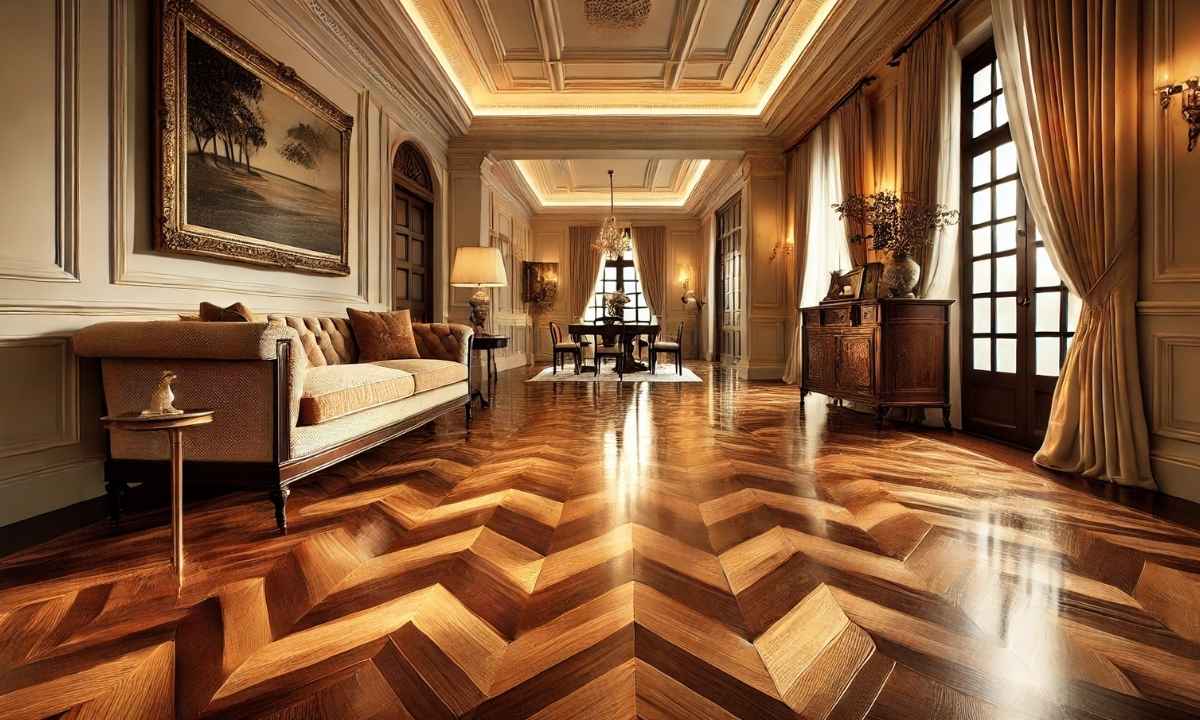
In recent years, there has been a significant shift in how homeowners in Singapore approach renovations and home improvement projects. As sustainability becomes a growing concern, more people seek eco-friendly solutions that beautify their homes and reduce their environmental impact. This trend is particularly evident in the restoration of parquet floors, a classic flooring choice known for its timeless elegance and durability.
Parquet floors, with their intricate patterns and rich textures, add a touch of sophistication to any space. However, they can become worn over time, leading many homeowners to consider restoration. Traditionally, floor restoration methods often involved harsh chemicals, excessive waste, and practices that were only sometimes aligned with sustainability goals. Today, however, a growing movement is towards adopting restoration techniques that embrace sustainability—combining traditional craftsmanship with modern, eco-friendly practices.
This blog will explore various sustainable techniques for restoring parquet floors in Singaporean homes. From using eco-friendly sanding and finishing products to sourcing reclaimed wood for repairs, these methods not only revive the beauty of your floors but also contribute to a healthier living environment. By choosing sustainable restoration practices, you can enhance the longevity of your parquet floors while minimizing your carbon footprint, making your home both stylish and environmentally conscious.
The Importance of Sustainable Parquet Floor Restoration
Environmental Impact of Conventional Restoration
Traditional floor restoration methods often have a significant environmental impact due to harsh chemicals and waste generation. These methods typically involve chemical strippers and finishes high in volatile organic compounds (VOCs), contributing to indoor air pollution and pose health risks. Additionally, conventional sanding produces large amounts of dust, including harmful particles from old finishes and wood, which can degrade air quality and harm the environment.
The process also generates considerable waste, as old materials are often discarded and replaced with new wood, contributing to deforestation and landfill waste. This combination of chemical use, dust pollution, and material waste underscores the environmental footprint of traditional floor restoration, prompting a shift towards more sustainable practices.
Benefits of Sustainable Practices
Embracing sustainable floor restoration techniques reduces environmental impact, preserves natural resources, and promotes a healthier indoor environment. By using eco-friendly materials and methods, the release of harmful chemicals is minimized. This approach protects natural resources by limiting deforestation and landfill contributions and enhances indoor air quality by avoiding using products with VOCs. Sustainable practices create a more eco-conscious home while ensuring long-lasting and beautiful flooring.
Sustainable Parquet Floor Restoration Techniques
Restoring parquet floors with sustainability in mind enhances the wood’s beauty and minimizes environmental impact. Here are critical sustainable techniques for parquet floor restoration:
Eco-Friendly Sanding and Refinishing
Traditional sanding methods generate large amounts of dust, which can pollute the air and pose health risks. Dust-free sanding machines capture nearly all the dust produced, significantly reducing airborne particles and creating a safer environment for workers and homeowners.
Following sanding, it is crucial to apply eco-friendly, water-based finishes. These finishes are low in volatile organic compounds (VOCs), making them safer for indoor air quality and the environment. Unlike traditional solvent-based finishes, water-based finishes offer durability while allowing the natural beauty of the wood to shine through, all without compromising on health or environmental standards.
Use of Natural Oils and Waxes
Natural oils and waxes are a non-toxic alternative to synthetic sealants for finishing parquet floors. Derived from renewable resources like linseed, tung, and beeswax, these products offer a biodegradable option for protecting and enhancing wood. Natural oils penetrate deep into the wood, enriching its grain, while waxes create a smooth, protective surface that repels water and dirt.
These natural finishes enhance the aesthetic appeal of parquet floors and offer long-lasting protection. They are durable and easily maintained with periodic reapplication, ensuring the floor remains beautiful and well-protected.
Reclaimed Wood for Repairs
When repairing damaged parquet flooring, reclaimed wood is a sustainable choice that preserves the environment and the floor’s authenticity. Reclaimed wood is sourced from old structures, reducing the need for new logging and conserving natural resources. This choice also reduces the carbon footprint associated with manufacturing new wood products.
Using reclaimed wood ensures that the repairs blend seamlessly with the existing floor, maintaining the space’s historical and aesthetic integrity.
Non-Toxic Adhesives
Non-toxic, biodegradable adhesives are essential in sustainable parquet floor restoration. Traditional adhesives often contain harmful chemicals that release VOCs, contributing to indoor air pollution. Non-toxic adhesives, formulated without these toxic substances, provide robust and durable bonding while ensuring a healthier indoor environment.
These adhesives contribute to the overall sustainability of the restoration process, aligning with efforts to create eco-friendly living spaces.
Case Studies of Sustainable Parquet Floor Restorations in Singapore
Commercial Case Study
A prestigious law firm in central Singapore sought to restore its original 1980s parquet flooring as part of an office renovation focusing on sustainability. The firm hired Big Red, and our team began dust-free sanding to address the accumulated wear and tear without causing air pollution. They then applied water-based, low-VOC finishes to protect the parquet while maintaining high indoor air quality.
In areas where the parquet was too damaged to restore, reclaimed wood was sourced to match the original flooring. This not only preserved the office’s aesthetic but also reduced environmental impact by avoiding new lumber. Non-toxic, biodegradable adhesives were used to secure the flooring, further enhancing the healthiness of the indoor environment.
The sustainable restoration significantly improved the office’s environmental footprint and indoor air quality. Using low-VOC finishes and non-toxic adhesives ensured a healthier workspace for employees and clients, while the reclaimed wood choice demonstrated the firm’s commitment to environmental responsibility. The project successfully revitalized the parquet floors and set a new standard for future sustainable renovations within the firm.
Tips for Maintaining Restored Parquet Floors Sustainably
Maintaining your newly restored parquet floor requires a balance of regular care and preventive measures. Here’s how to keep your floor looking pristine while adhering to eco-friendly practices:
Daily Care:
- Use eco-friendly, non-toxic cleaning products
- Sweep regularly and mop gently with a pH-neutral cleaner
- Avoid excess water to prevent moisture damage
Preventive Measures:
- Place protective pads under furniture legs
- Maintain consistent indoor humidity levels
- Use humidifiers or dehumidifiers as needed to prevent wood expansion and contraction
Periodic Maintenance:
- Apply natural oils or waxes for touch-ups
- Address minor issues promptly to prevent more significant problems
- Schedule regular maintenance to extend the life of your restoration
By following these guidelines, you’ll preserve the beauty of your parquet floor while minimizing environmental impact. This approach ensures your floor remains a stunning home feature for years, embodying elegance and sustainability.
Give Your Parquet Floors a Lasting, Expert Restoration
In conclusion, the renaissance of parquet flooring in Singapore represents a compelling fusion of heritage and innovation. The sustainable restoration techniques we’ve explored—from eco-friendly sanding and finishing to reclaimed wood—offer a path to revive these classic floors without compromising our environmental values.
As we’ve seen, these methods breathe new life into timeworn surfaces, contributing to healthier living spaces and reduced ecological footprints. The judicious use of low-VOC products, the artful repair with reclaimed timber, and the adoption of sustainable maintenance practices all play crucial roles in this green revival.
As custodians of Singapore’s architectural legacy, we encourage you to embrace these eco-conscious approaches in restoration projects. By doing so, you’re not merely preserving a piece of your home’s history; you’re actively participating in a larger narrative of urban sustainability.
Remember, each restored parquet floor is a testament to our ability to honor the past while innovating for the future. As you contemplate your next renovation, consider the profound impact of choosing sustainability. In doing so, you’ll enhance the beauty and longevity of your home and contribute to Singapore’s vision of a city in harmony with nature.
Transform your home with professional parquet floor restoration services that enhance the beauty and longevity of your flooring. At Big Red, we specialize in restoring parquet floors using proven techniques that are safe for your family and the environment. From precision sanding to the careful application of natural finishes, our team ensures your floors will look stunning for years to come.
Ready to restore your parquet floors? Contact us today at +65 6241 9443 or reach out via WhatsApp at +65 9321 9321 to schedule a consultation with our expert team.




